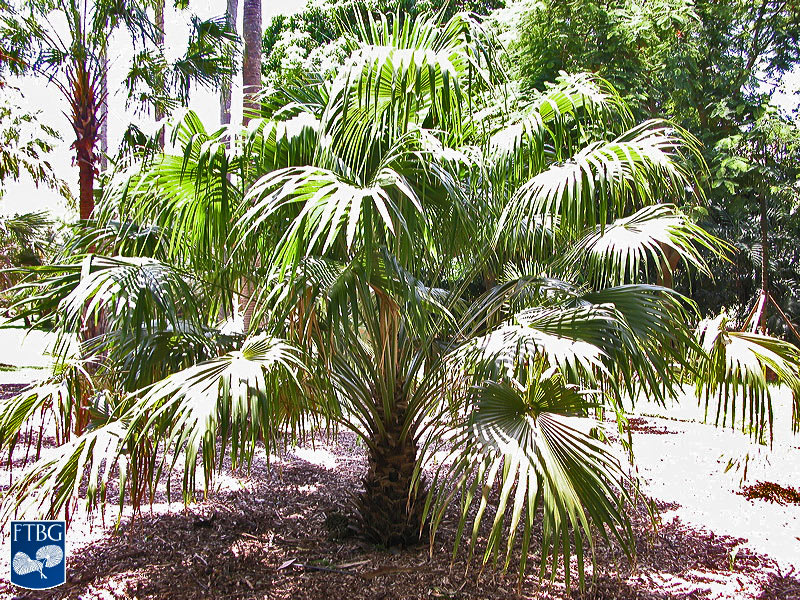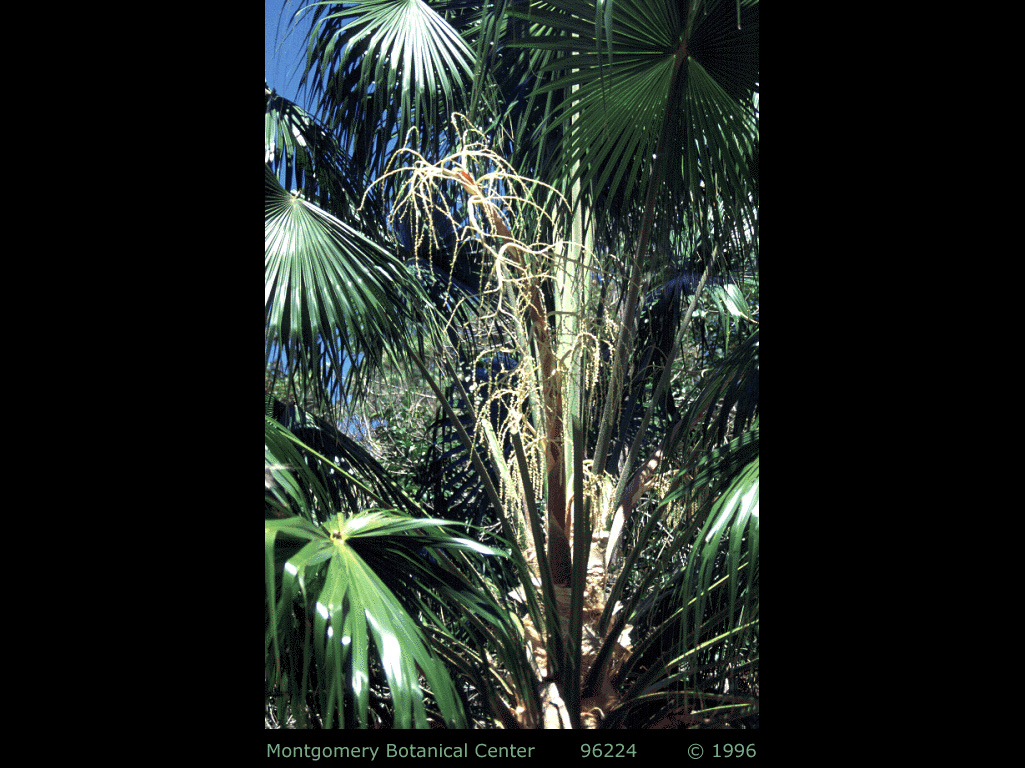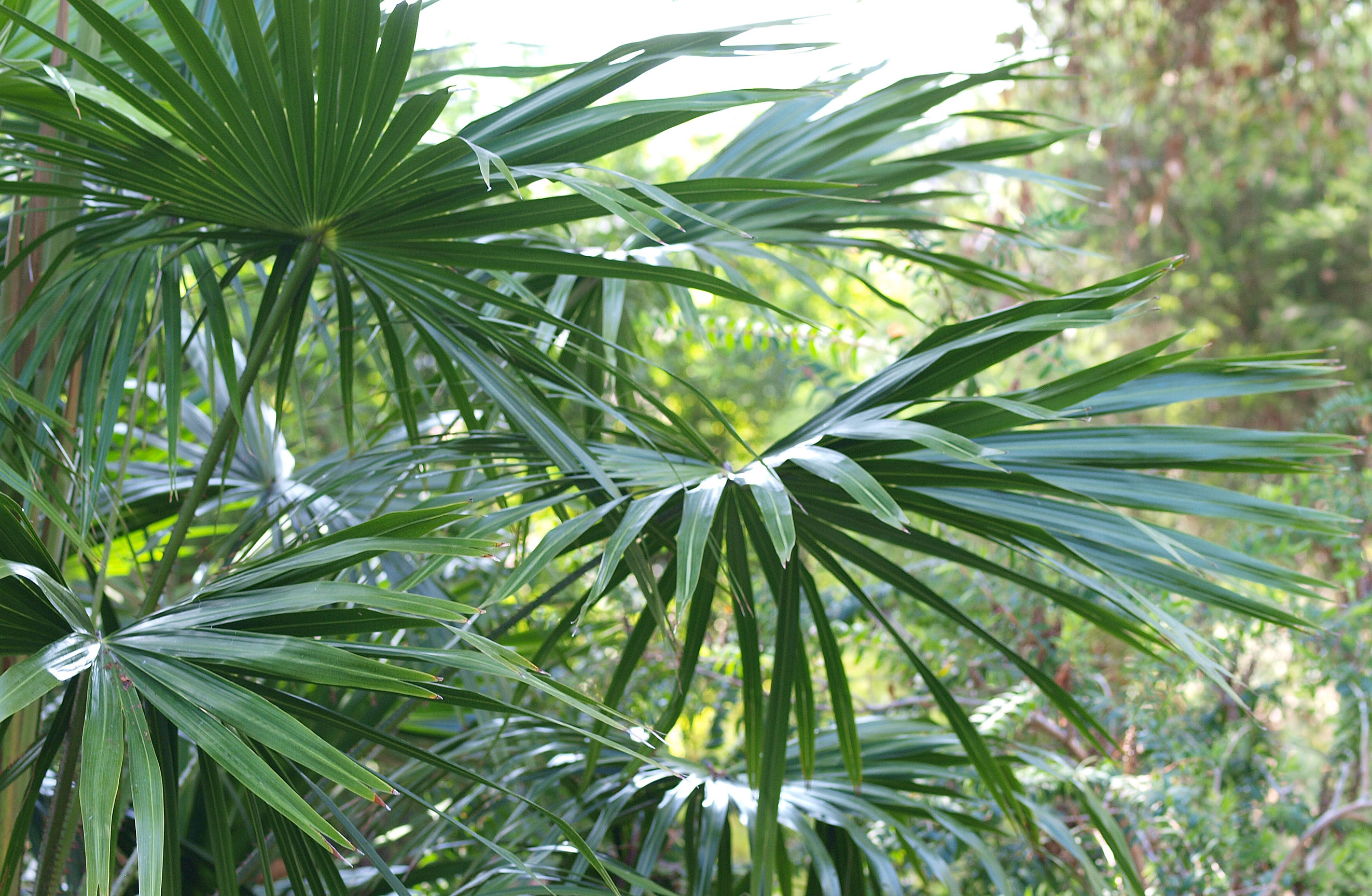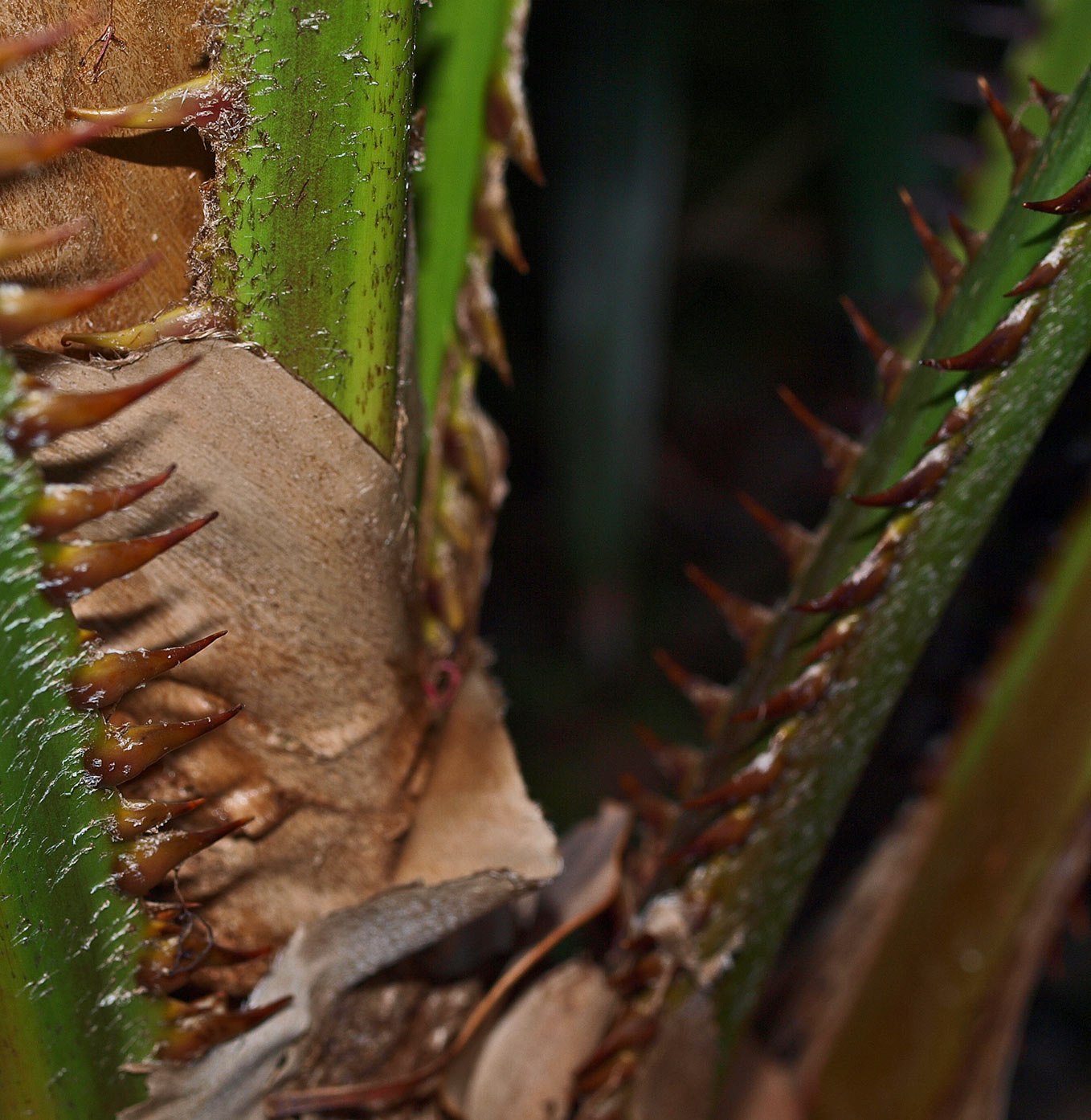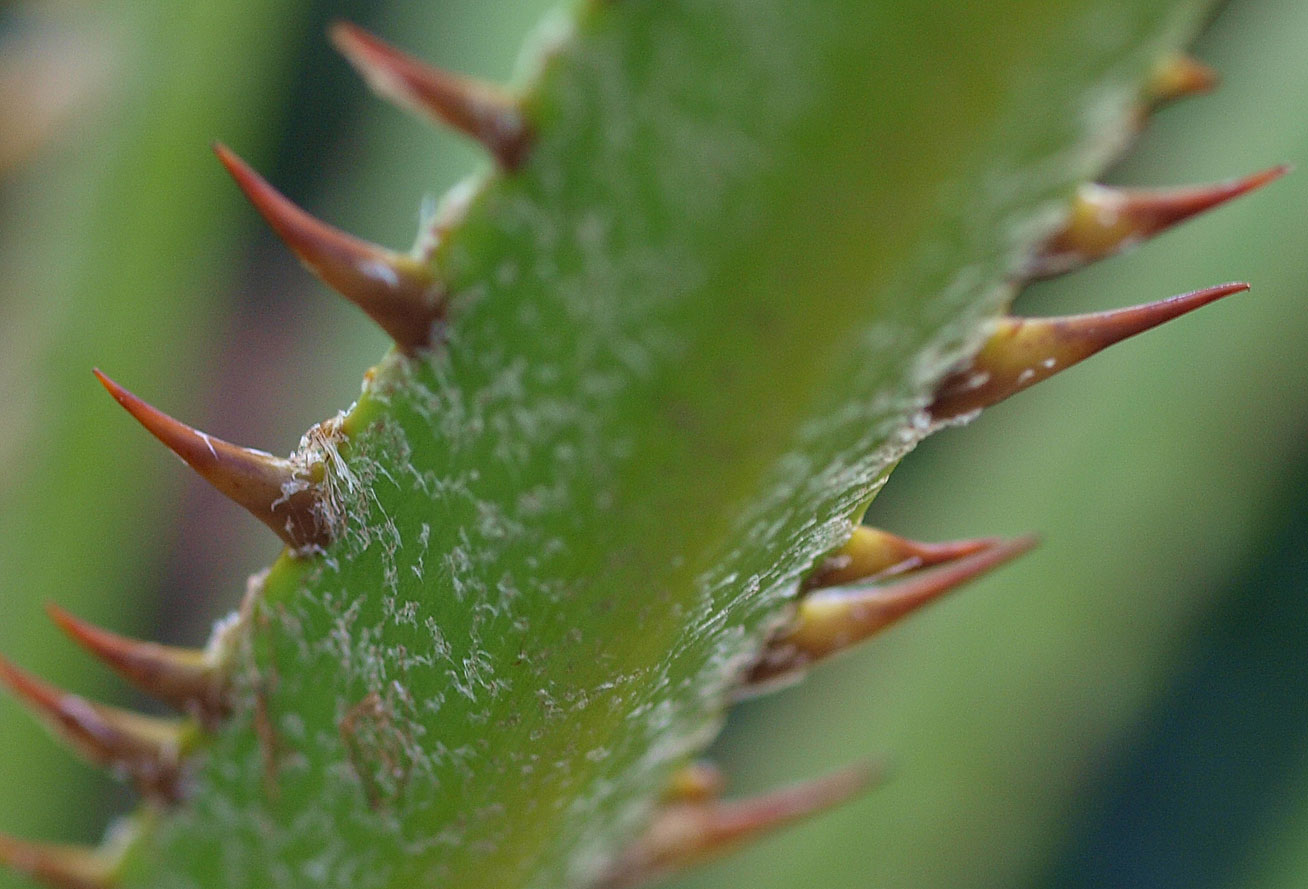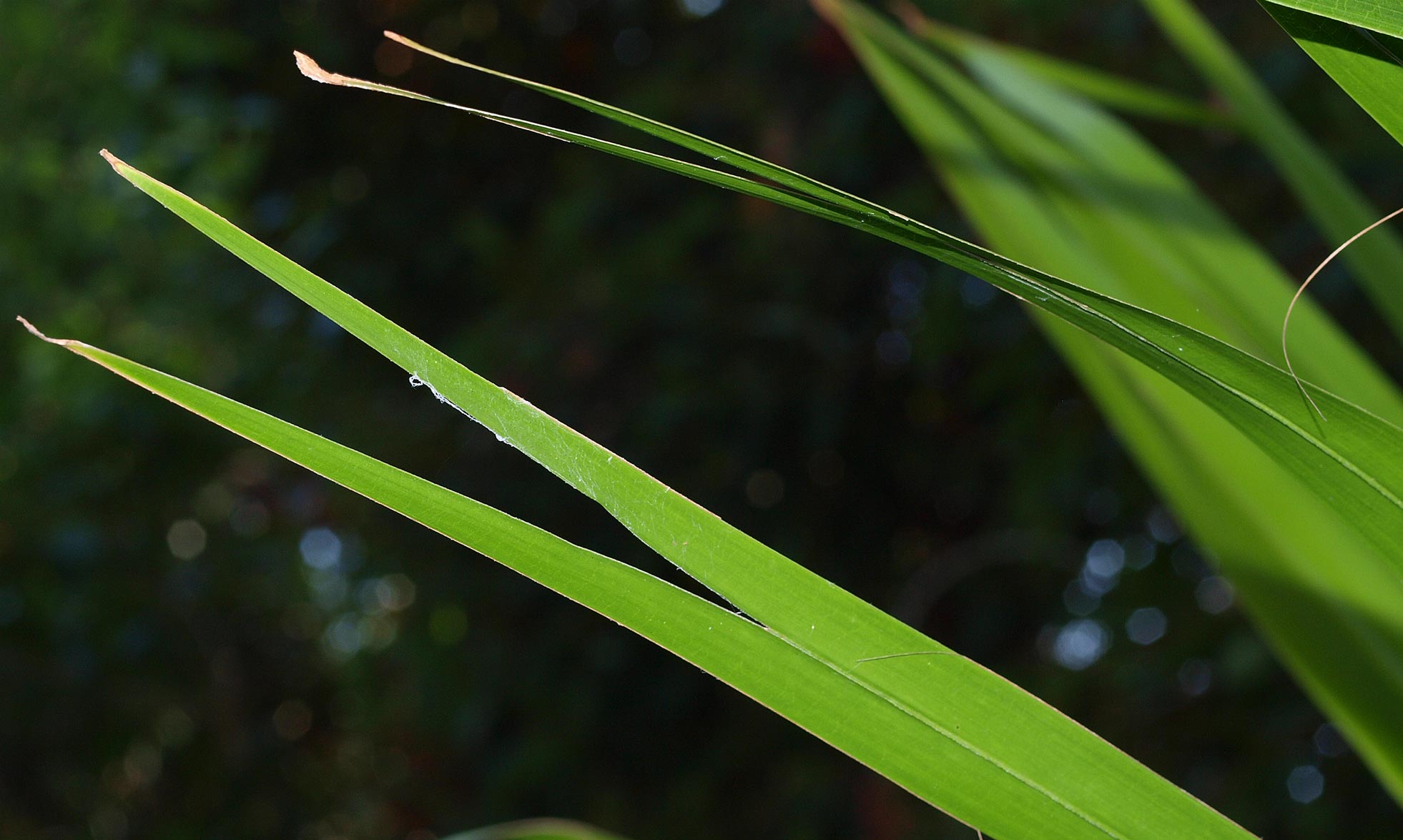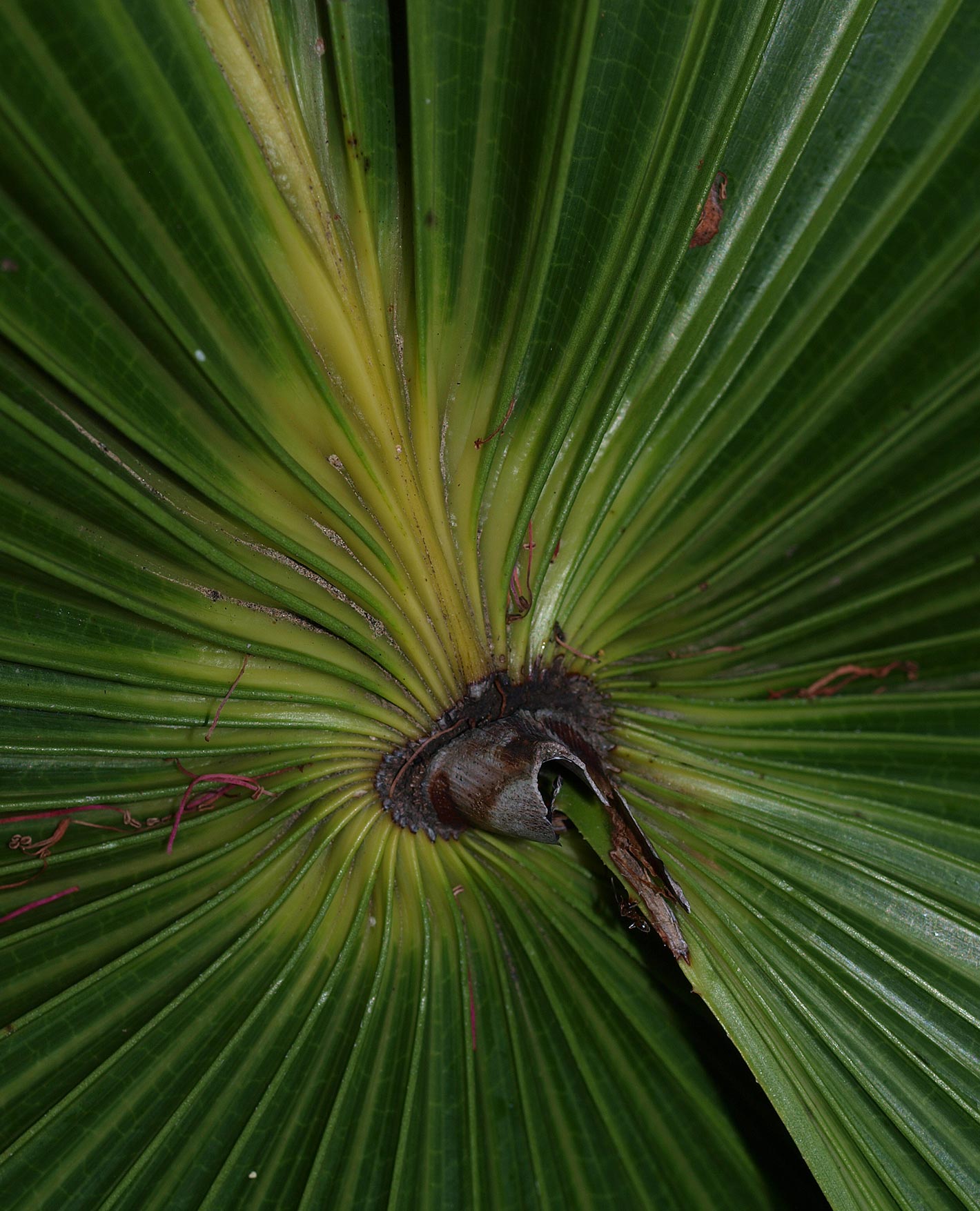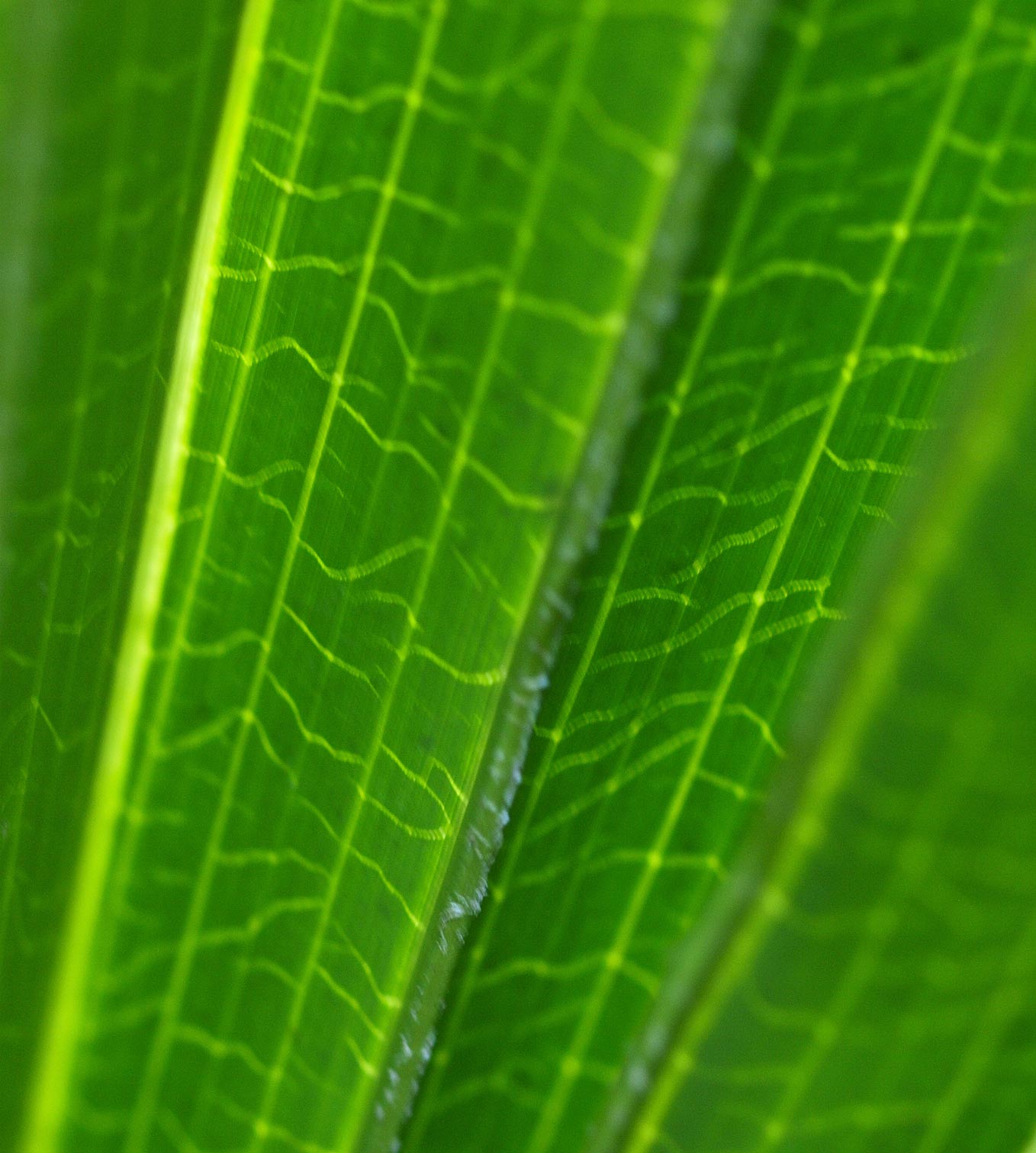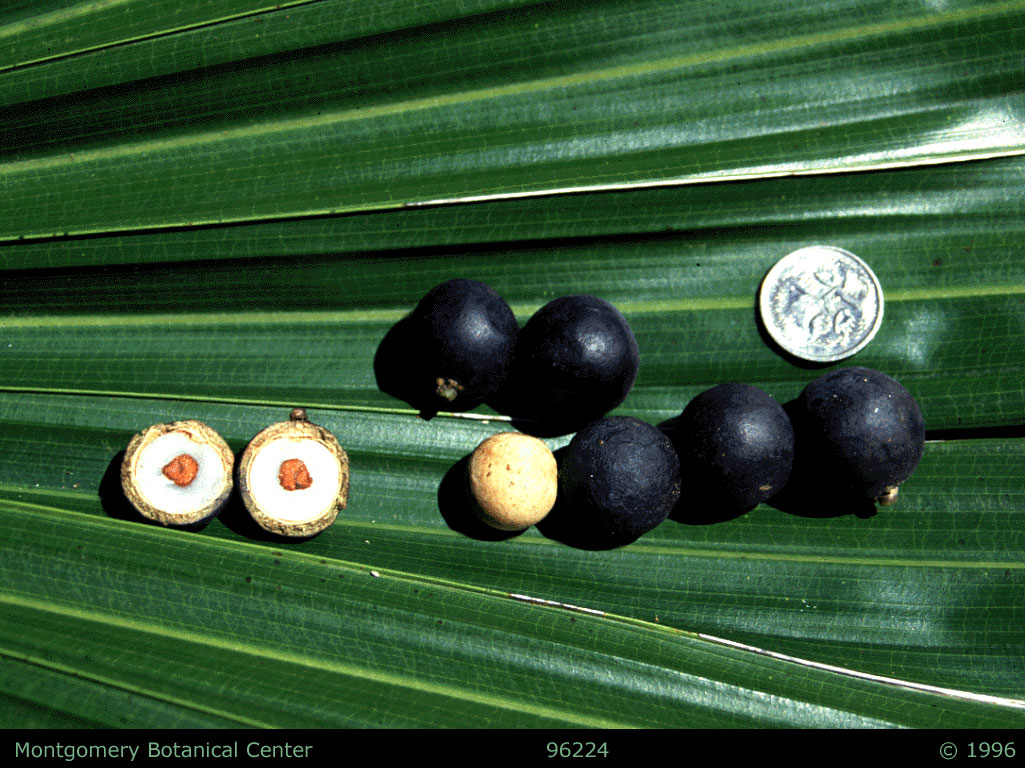Livistona australis
|
Livistona australis habit. Photograph courtesy of Fairchild Tropical Botanical Garden, Guide to Palms http://palmguide.org/index.php |
|
Livistona australis young palm with inflorescence. (MBC photo: 981800-GD01) Photograph courtesy of Montgomery Botanical Center http://www.montgomerybotanical.org/ |
|
Livistona australis leaf canopy |
|
Livistona australis leaf. Photograph courtesy of Fairchild Tropical Botanical Garden, Guide to Palms http://palmguide.org/index.php |
|
Livistona australis petiole armed with spines |
|
Livistona australis petiole armed with spines |
|
Livistona australis bifid leaf tips |
|
Livistona australis adaxial leaf with hastula |
|
Livistona australis abaxial leaf with costa |
|
Livistona australis with obvious transverse veinlets |
|
Livistona australis fruit. (MBC photo: 96224r) Photograph courtesy of Montgomery Botanical Center http://www.montgomerybotanical.org/ |
Common name
Australian fan palm
Description
Stems: Solitary, erect, gray or brown, to 15 m in height and 30-45 cm in diameter. Old fibers and leafleaf:
in palms -- the leaf blade (which is usually divided into leaflets or leaf segments), the petiole (or leaf stalk) and the sheath (which forms the attachment of the leaf to the stem)
bases persist on the stem, but with age, it becomes bare with conspicuous, rough, closely spaced rings of leafleaf:
in palms -- the leaf blade (which is usually divided into leaflets or leaf segments), the petiole (or leaf stalk) and the sheath (which forms the attachment of the leaf to the stem)
scars and vertical fissures. Leaves: Costapalmatecostapalmate:
a fan-shaped leaf with a midrib (costa) extending into the blade, sometimes extending far enough into the blade to cause it to curve (e.g., <em>Sabal palmetto</em>)
, with a prominent hastulahastula:
a flange or collar-like flap of tissue extending from the petiole where a palmate leaf blade joins it; often seen on the upper (adaxial) surface, but may also be found on the lower (abaxial) surface in some palms
, induplicateinduplicate:
Most palm leaflets or leaf segments are obviously folded. If the folds create a V-shape, with the midrib lower than the margins (so that rain might fall "into a valley"), the folding is induplicate.
, glossy deep green, up to 2.5 m across, and divided to about the two-thirds its length into stiff segments with drooping, bifidbifid:
deeply cleft into two usually equal parts or two-lobed from the apex; for example, palms with bifid leaves or leaflet tips (e.g., <em>Chamaedorea metallica</em> has bifid leaves)
tips. The petioles are armed with robust marginal teeth. Flowers and fruit: The inflorescences are 1-1.5 m long and branched to five orders. The creamy yellow flowers have both male and female structures. The fruit is spherical, about 2 cm across, and reddish-brown to black when mature.
Diagnostic features
Field: Solitary, erect, stem with conspicuous, rough, closely spaced rings of leafleaf:
in palms -- the leaf blade (which is usually divided into leaflets or leaf segments), the petiole (or leaf stalk) and the sheath (which forms the attachment of the leaf to the stem)
scars and vertical fissures. Costapalmatecostapalmate:
a fan-shaped leaf with a midrib (costa) extending into the blade, sometimes extending far enough into the blade to cause it to curve (e.g., <em>Sabal palmetto</em>)
leaves divided to about two-thirds their length into stiff segments with drooping, bifidbifid:
deeply cleft into two usually equal parts or two-lobed from the apex; for example, palms with bifid leaves or leaflet tips (e.g., <em>Chamaedorea metallica</em> has bifid leaves)
tips. Petioles armed with robust spines.
May be confused with
Other Livistona species, but L. australis has a distinctive stem.
Distribution
Native to Australia
Additional comments
Occasionally cultivated in Hawaii; the most cold hardy of the Livistona palms
Scientific name
Livistona australis (R.Br.) Mart.
Family
Arecaceae/Palmae
Synonyms
Corypha australis R.Br.


